More From the Los Angeles Times
-
-
-
-
Sept. 26, 2024
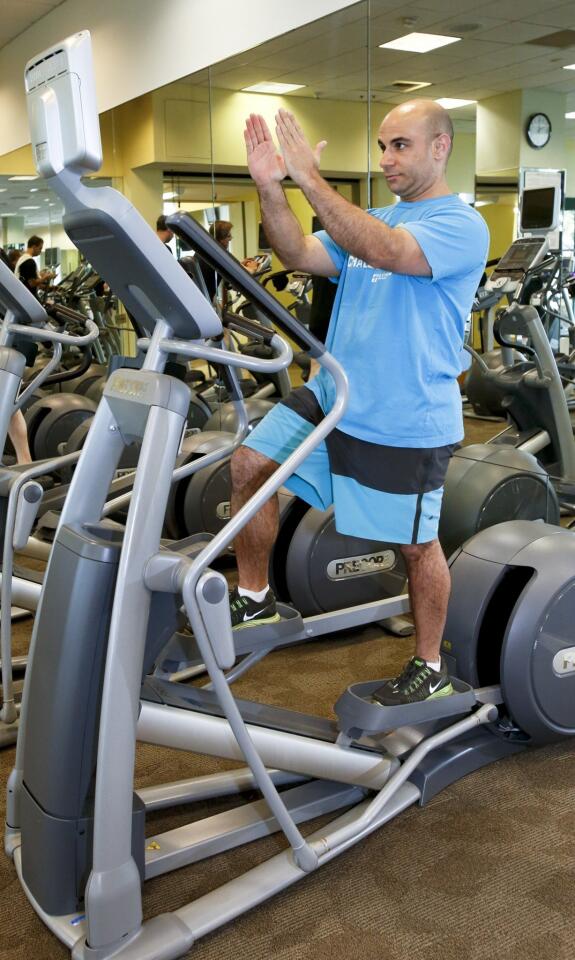
This machine is popular, as most people find it easy to read while working out. Concentrating on other things, however, takes away from exercise benefits and can affect form. Aim for an upright position when on the elliptical. (Anne Cusack / Los Angeles Times)
Dr. Hooman Melamed, an orthopedic spine surgeon, goes through common workouts and shows how to perform exercise moves correctly to avoid injury.
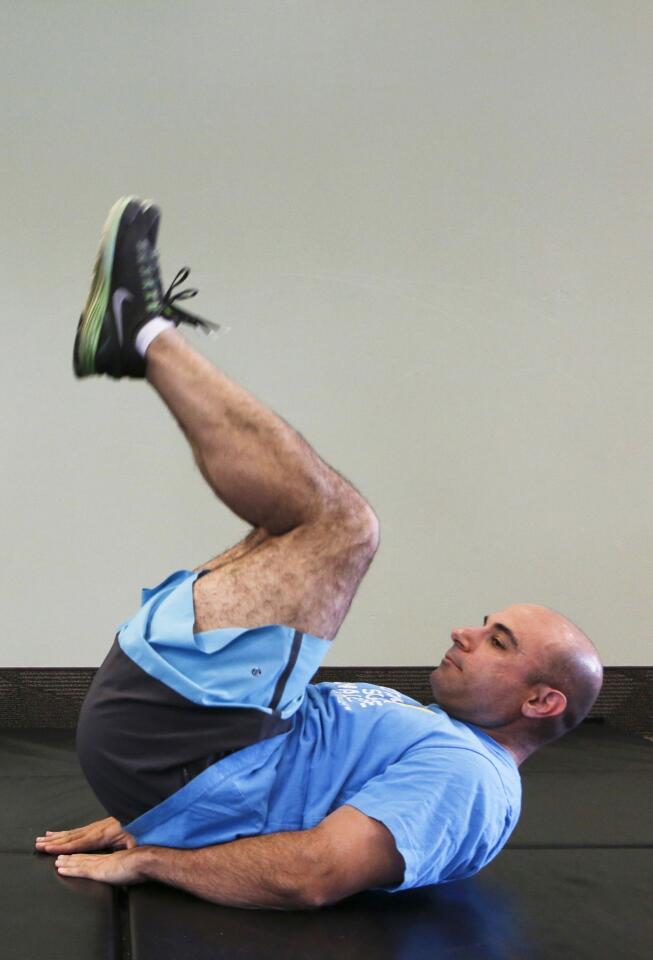
Don’t strain your neck by jerking upward when performing crunches. An alternative to clasping your hands behind your neck is to place your hands under your buttocks, draw your navel toward your spine and then lift your bent legs, raising and lowering the hips from the floor. (Anne Cusack / Los Angeles Times)
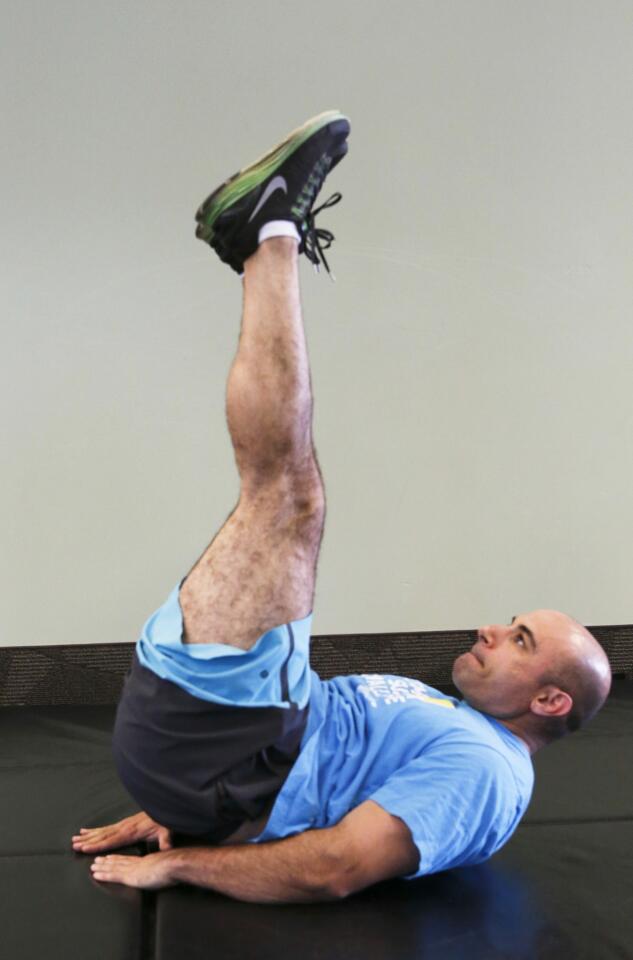
To make abdominal crunches more challenging, hold a light medicine ball between your feet. (Anne Cusack / Los Angeles Times)
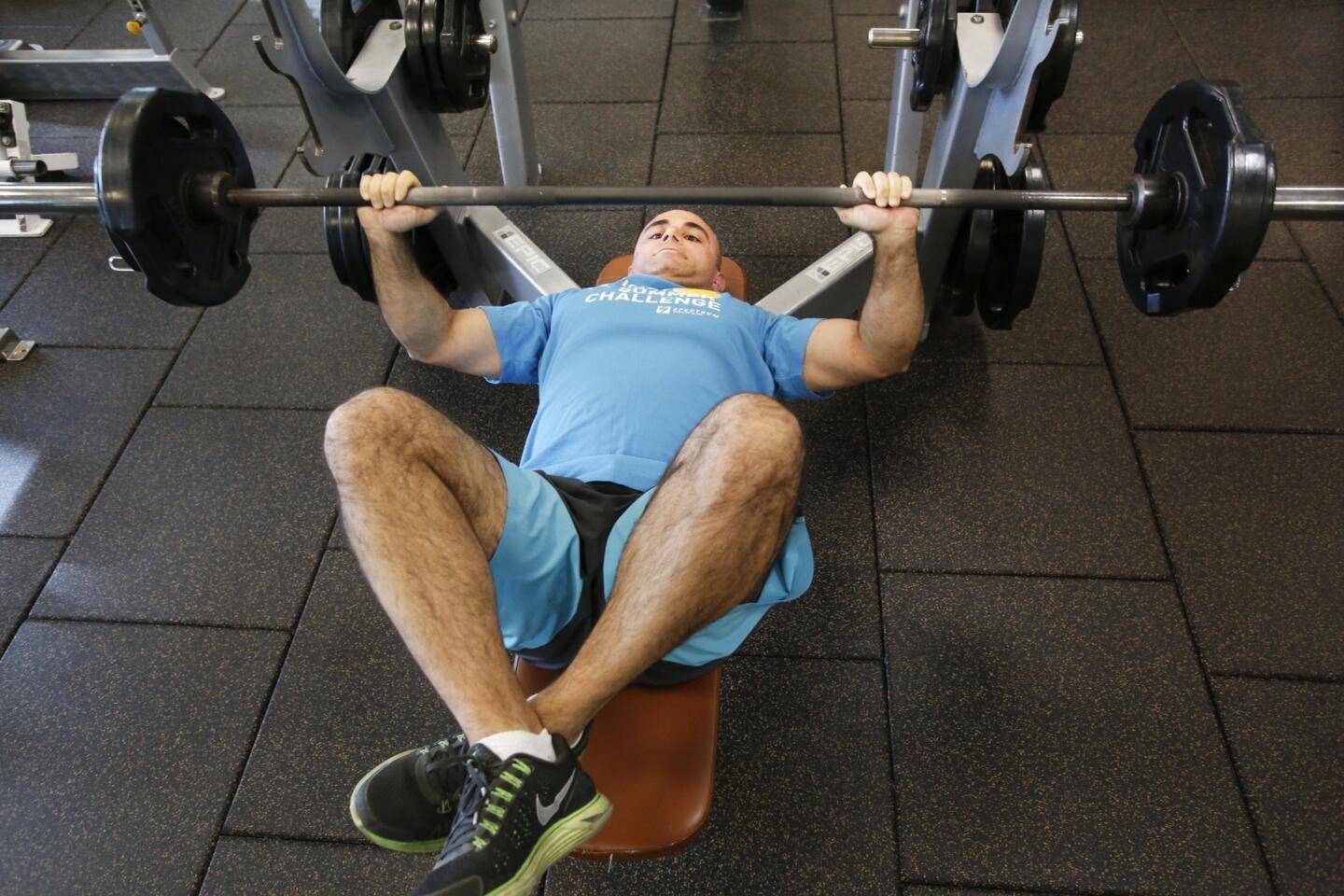
When performing bench presses, avoid arching the back or bouncing the barbell off the chest. Keep the back flat and try less weight if you can’t perform the motion smoothly. (Anne Cusack / Los Angeles Times)
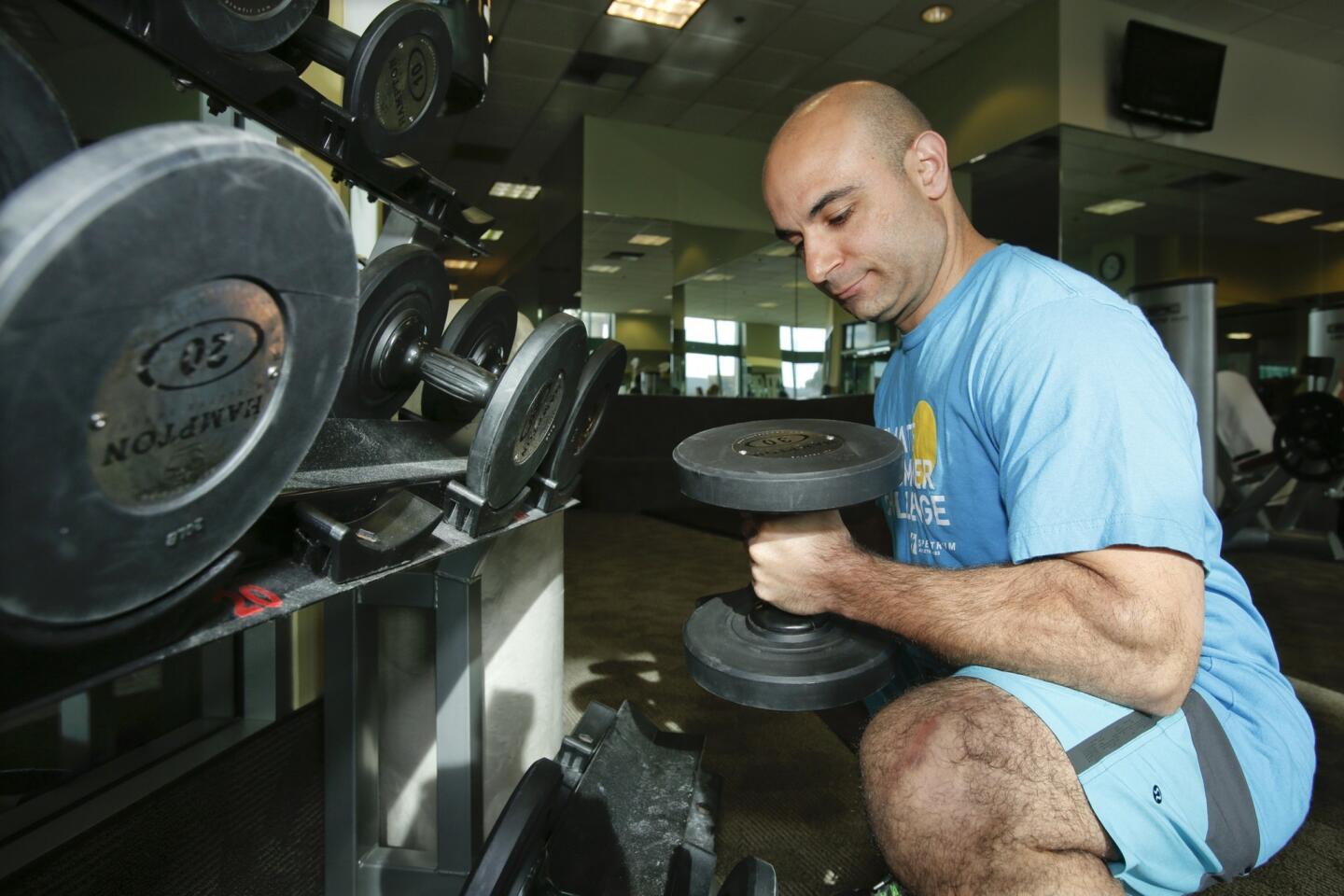
Incorrect form for biceps curls can begin as soon as you lift the weight from the rack. Stand facing the rack, squat if the rack is below chest level and bring it close to your chest to start an exercise. (Anne Cusack / Los Angeles Times)
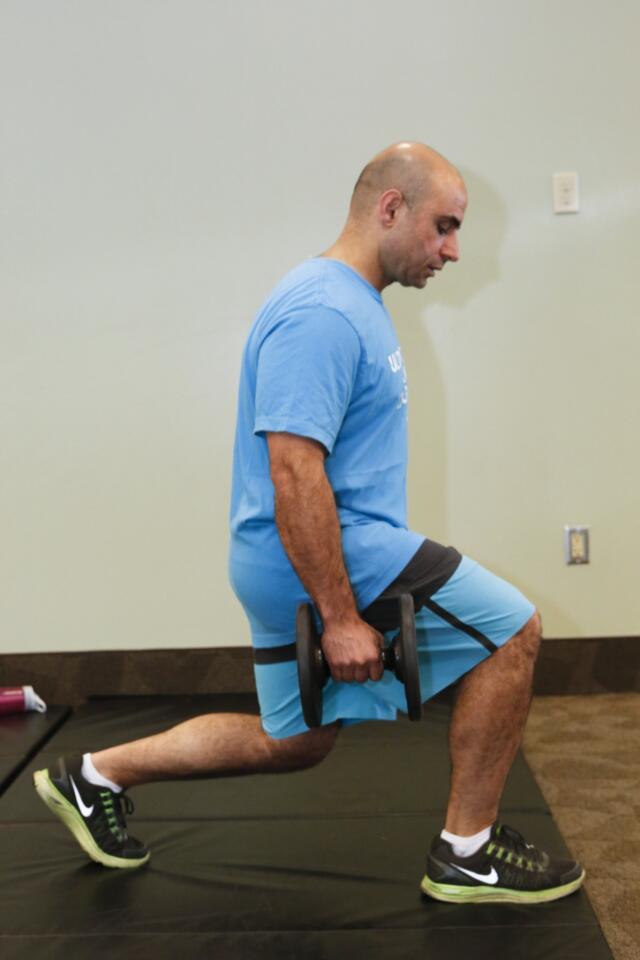
Perform biceps curls with one foot forward, knees slightly bent. This will relax the back and keep pressure off it. (Anne Cusack / Los Angeles Times)
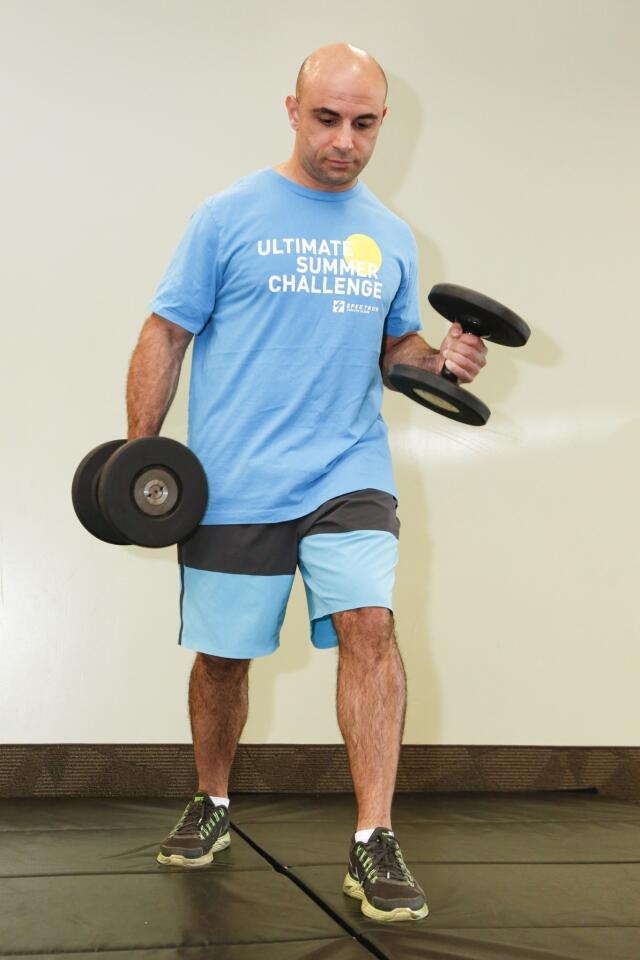
Hold the weight with the knuckles facing outward and turn the palms as you raise the weights. Elbows should remain still and at your sides. (Anne Cusack / Los Angeles Times)
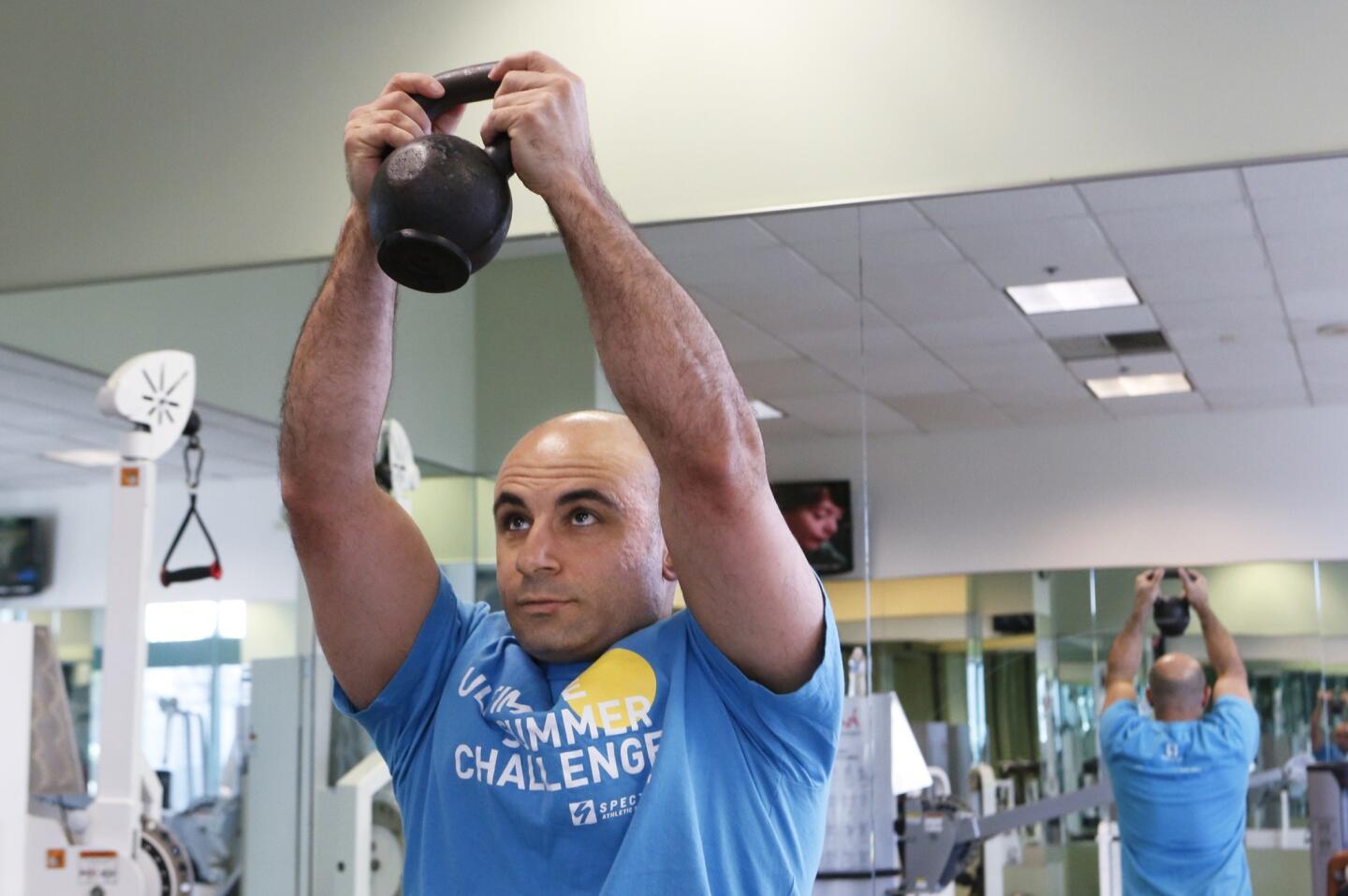
Injury can occur with a kettle bell when it is swung too forcefully or too high, or when the kettle bell is too heavy and is swung too far away from the torso. (Anne Cusack / Los Angeles Times)
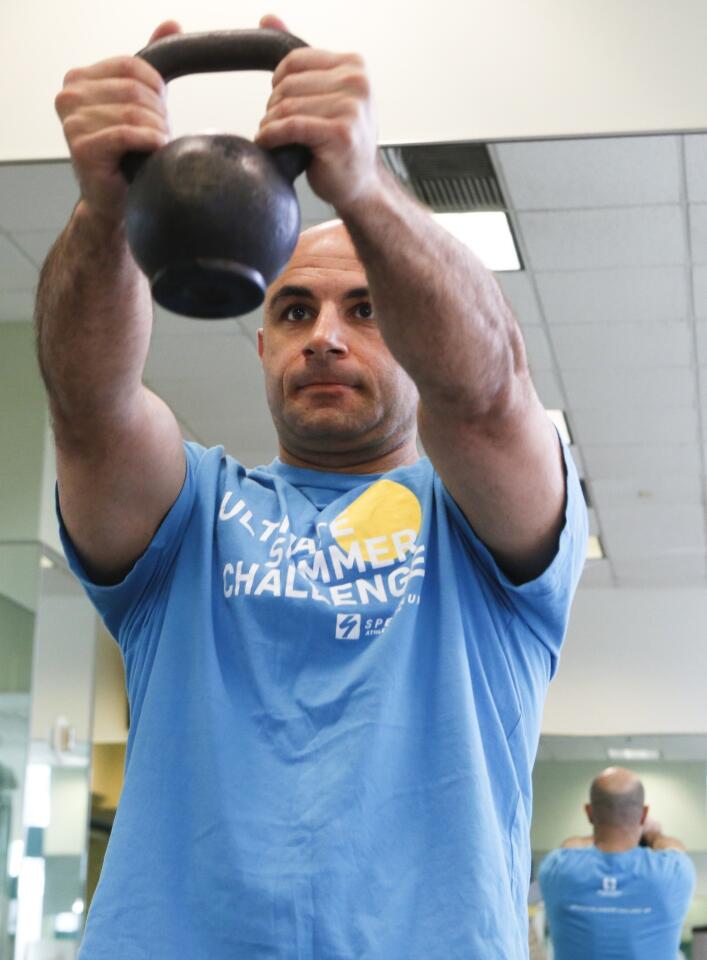
If an exercise move requires jumping with the kettle bell, land on the balls of the feet and with the knees behind the toes to avoid knee injuries. (Anne Cusack / Los Angeles Times)
Sept. 26, 2024